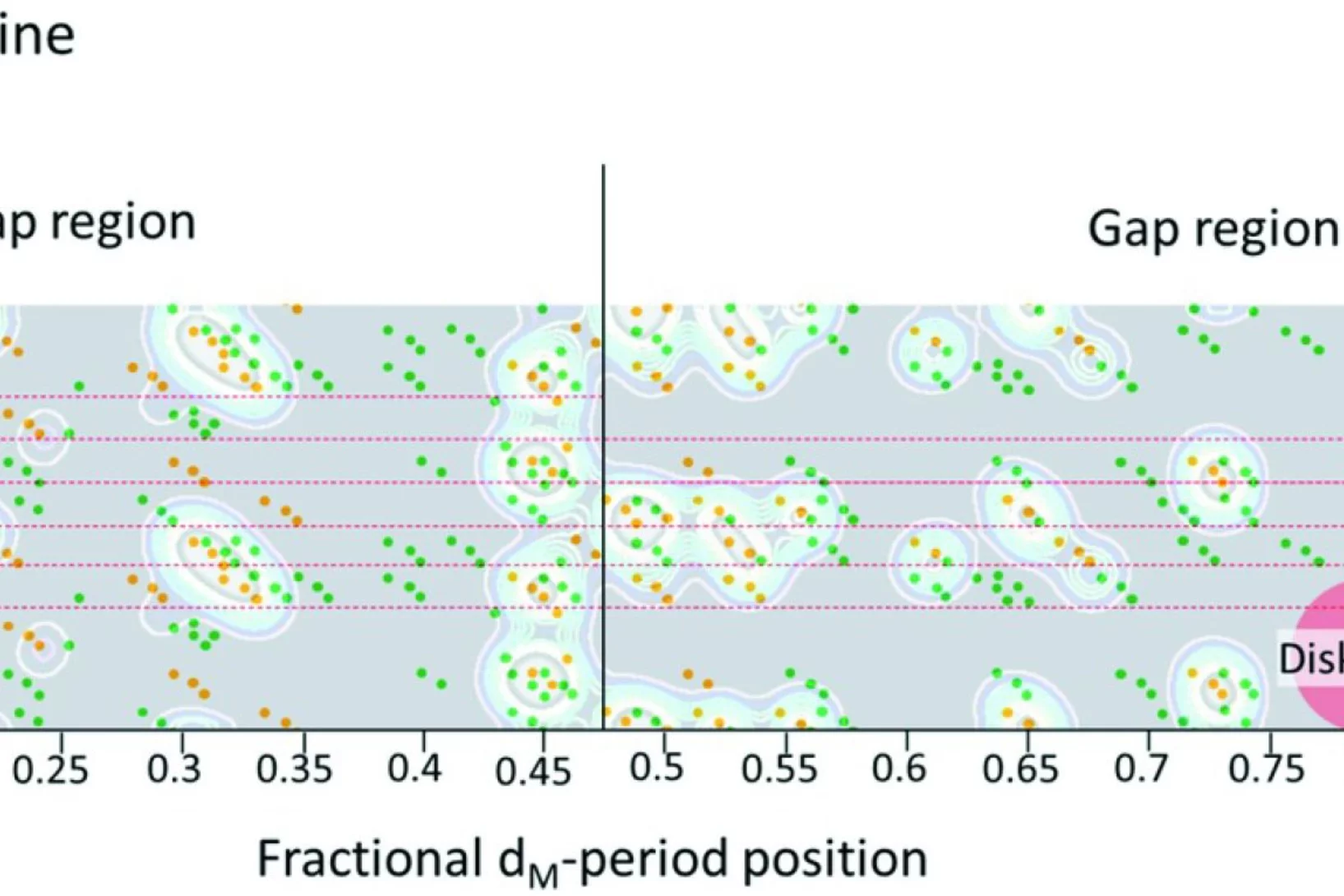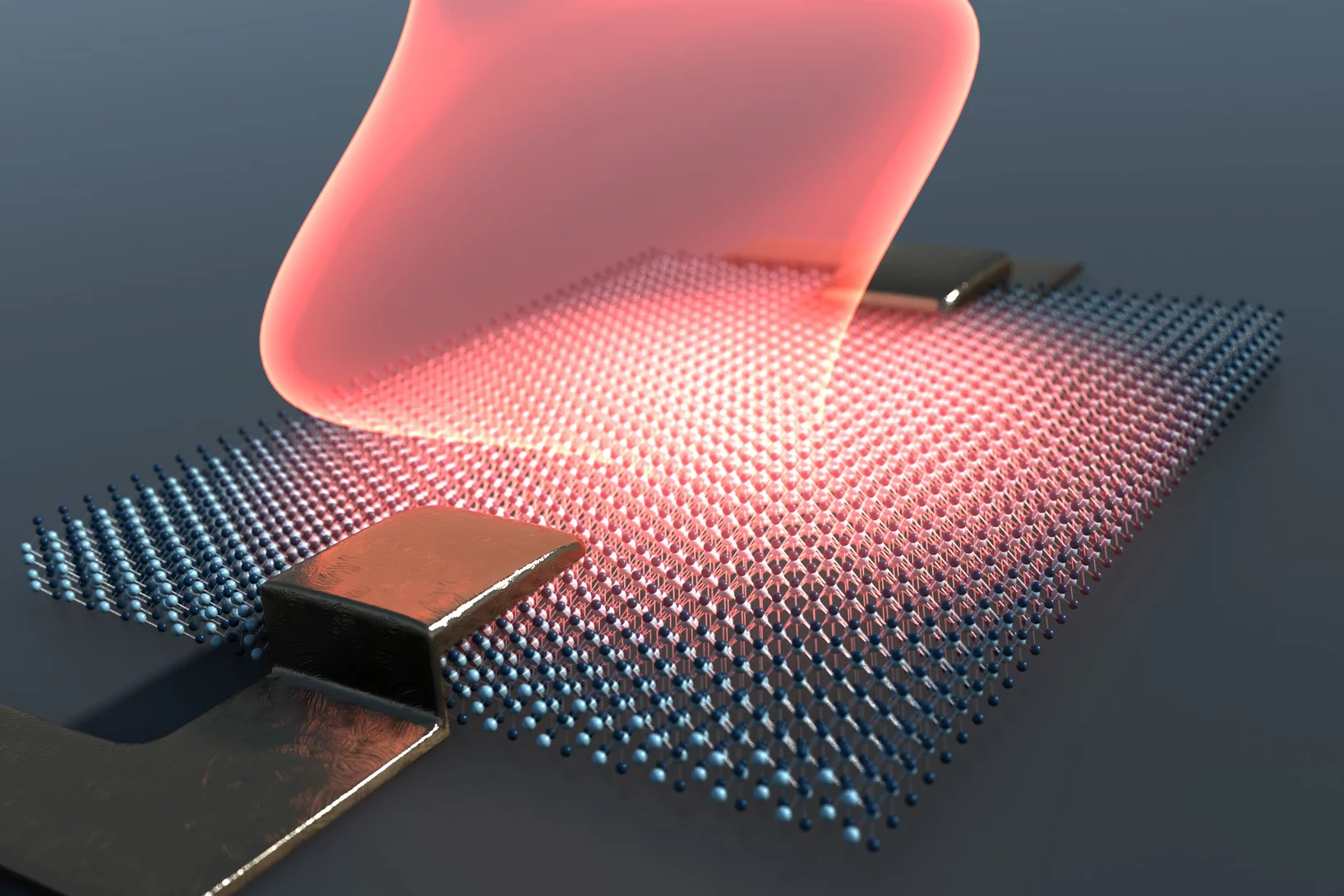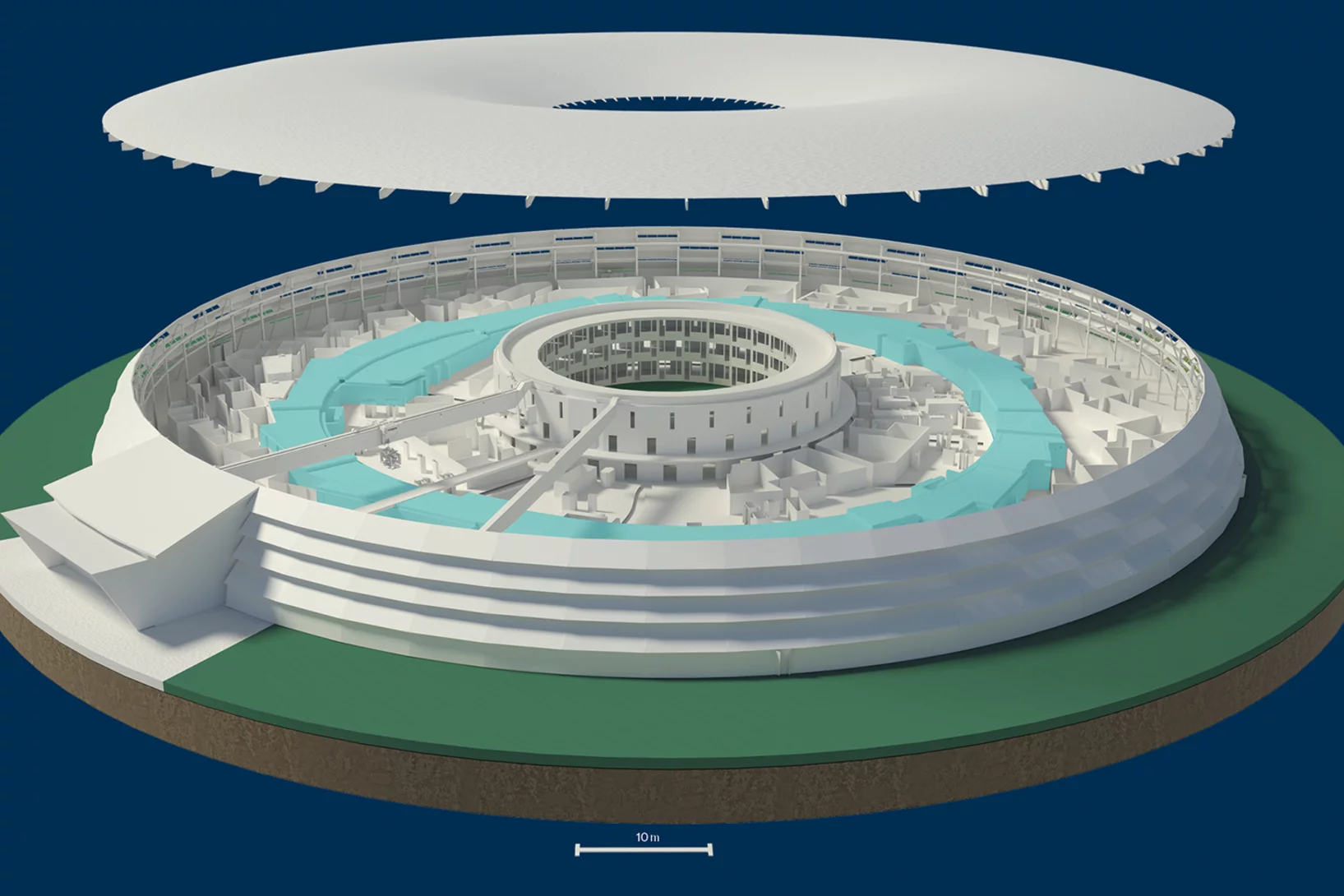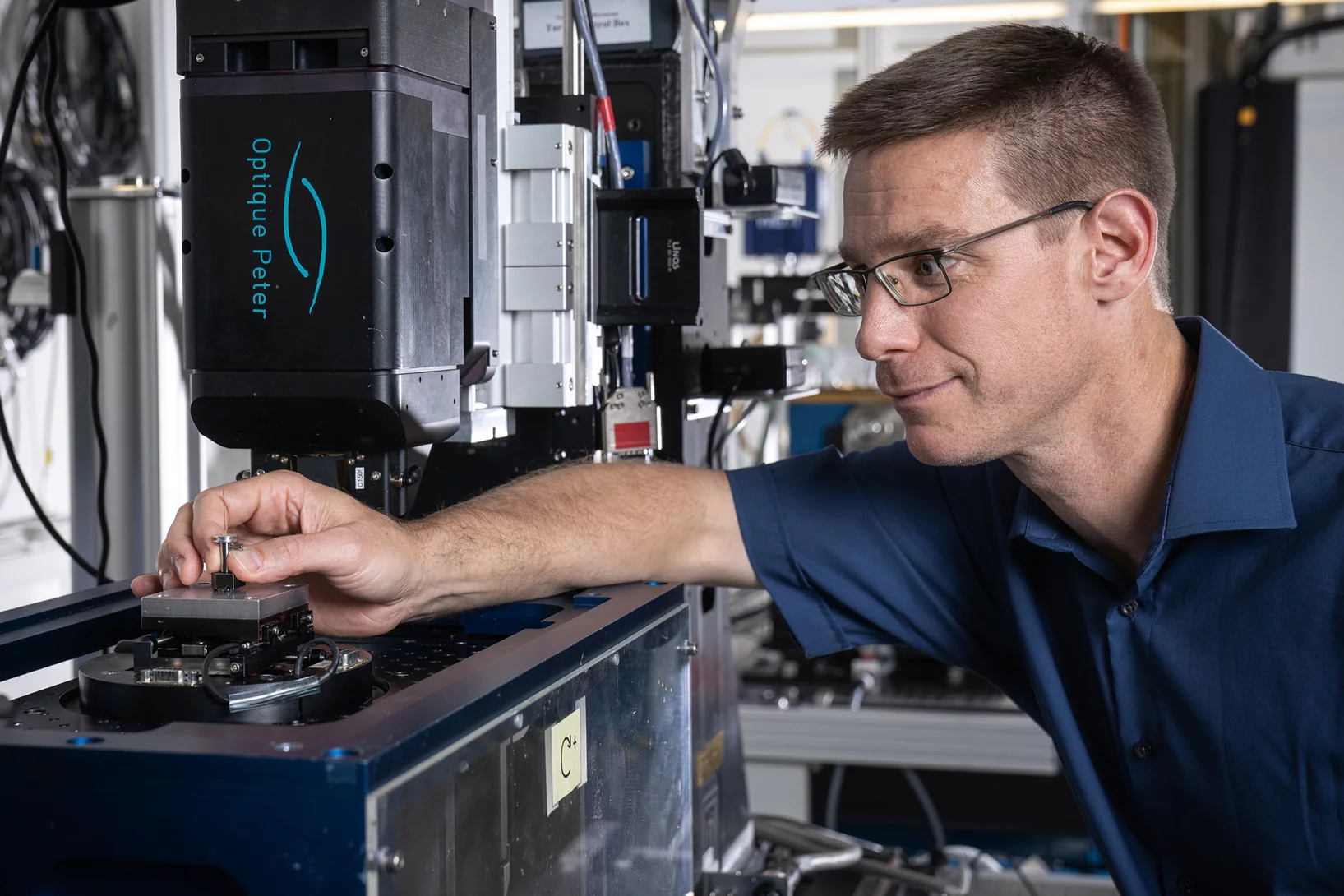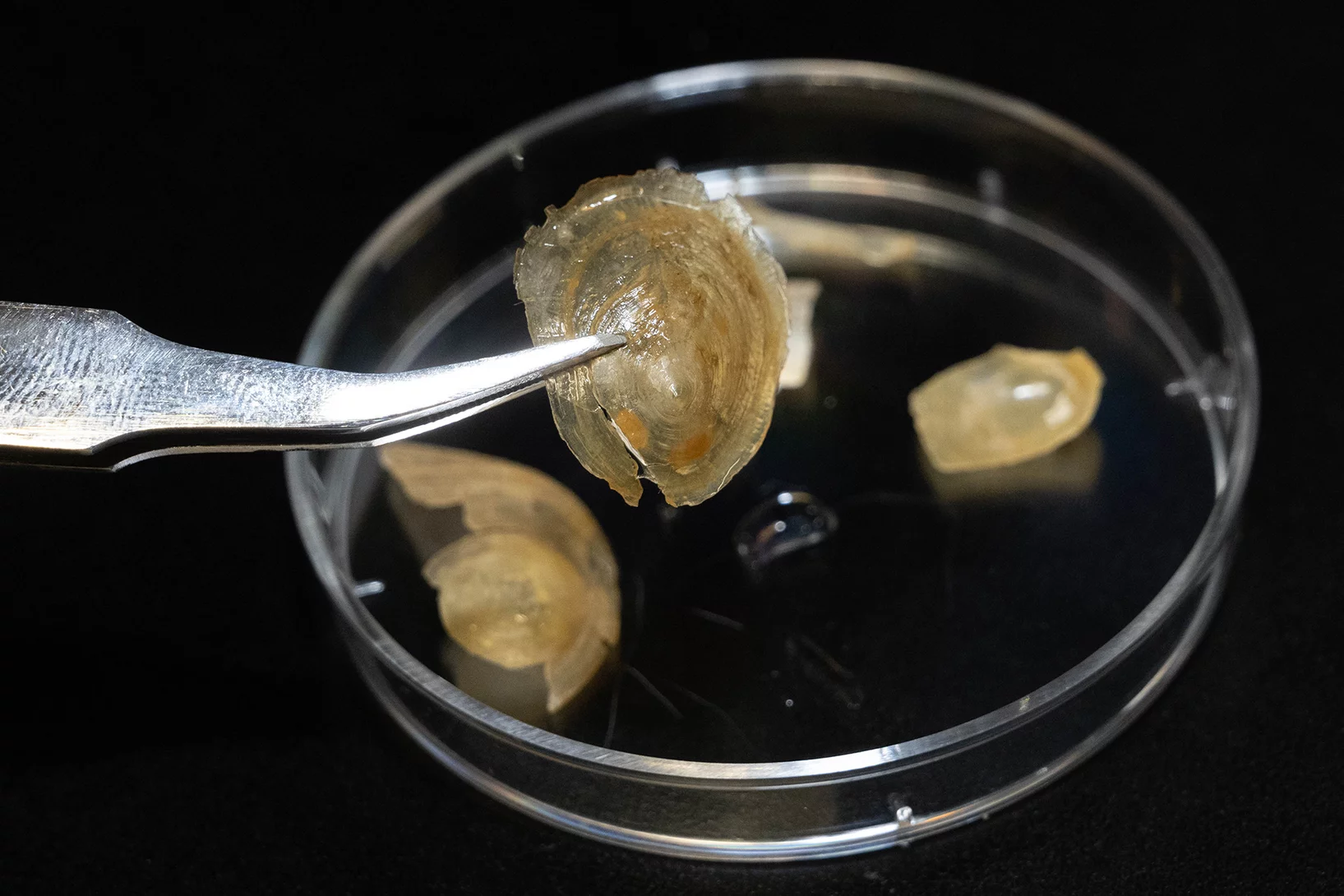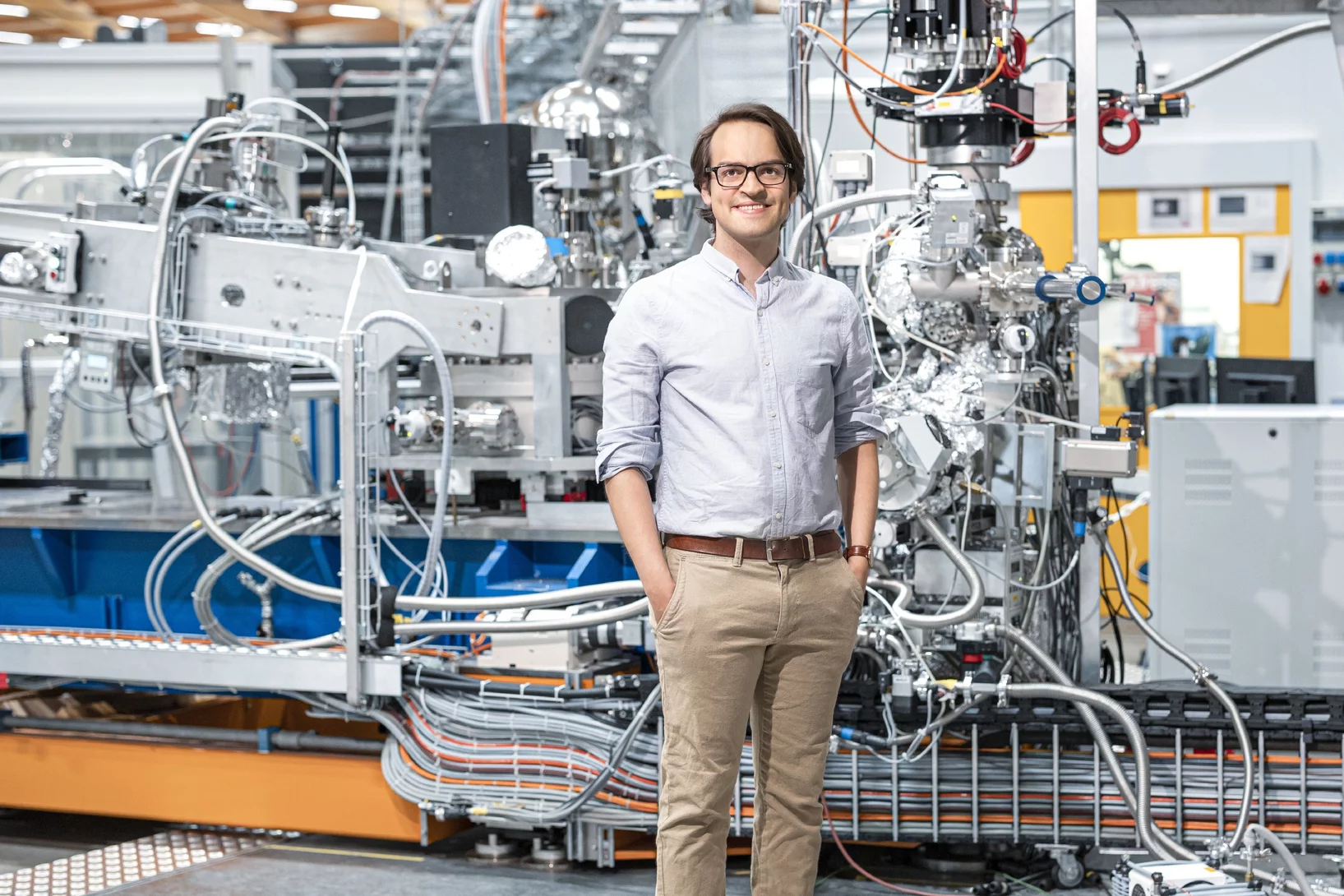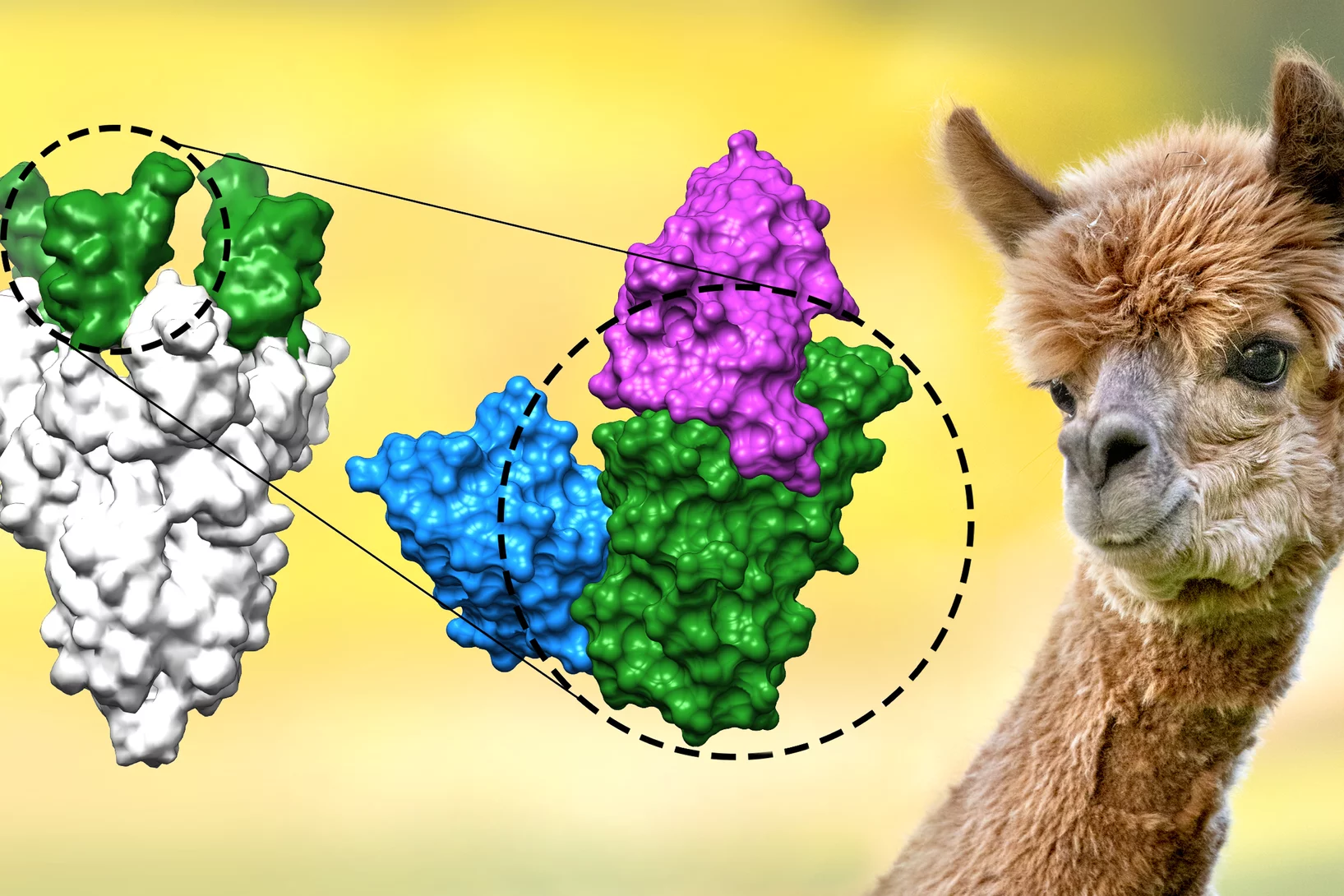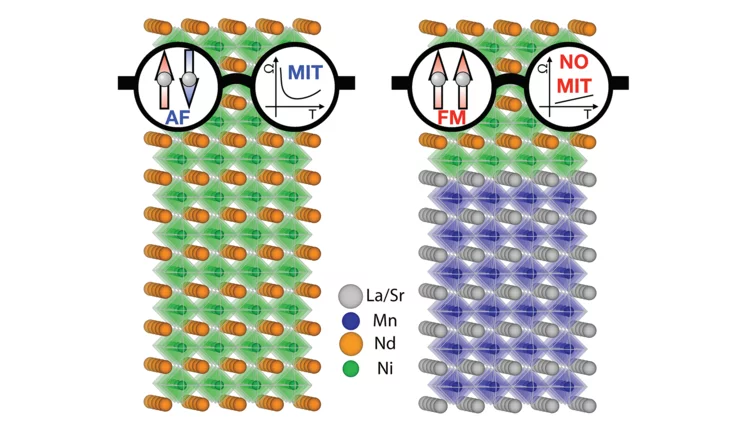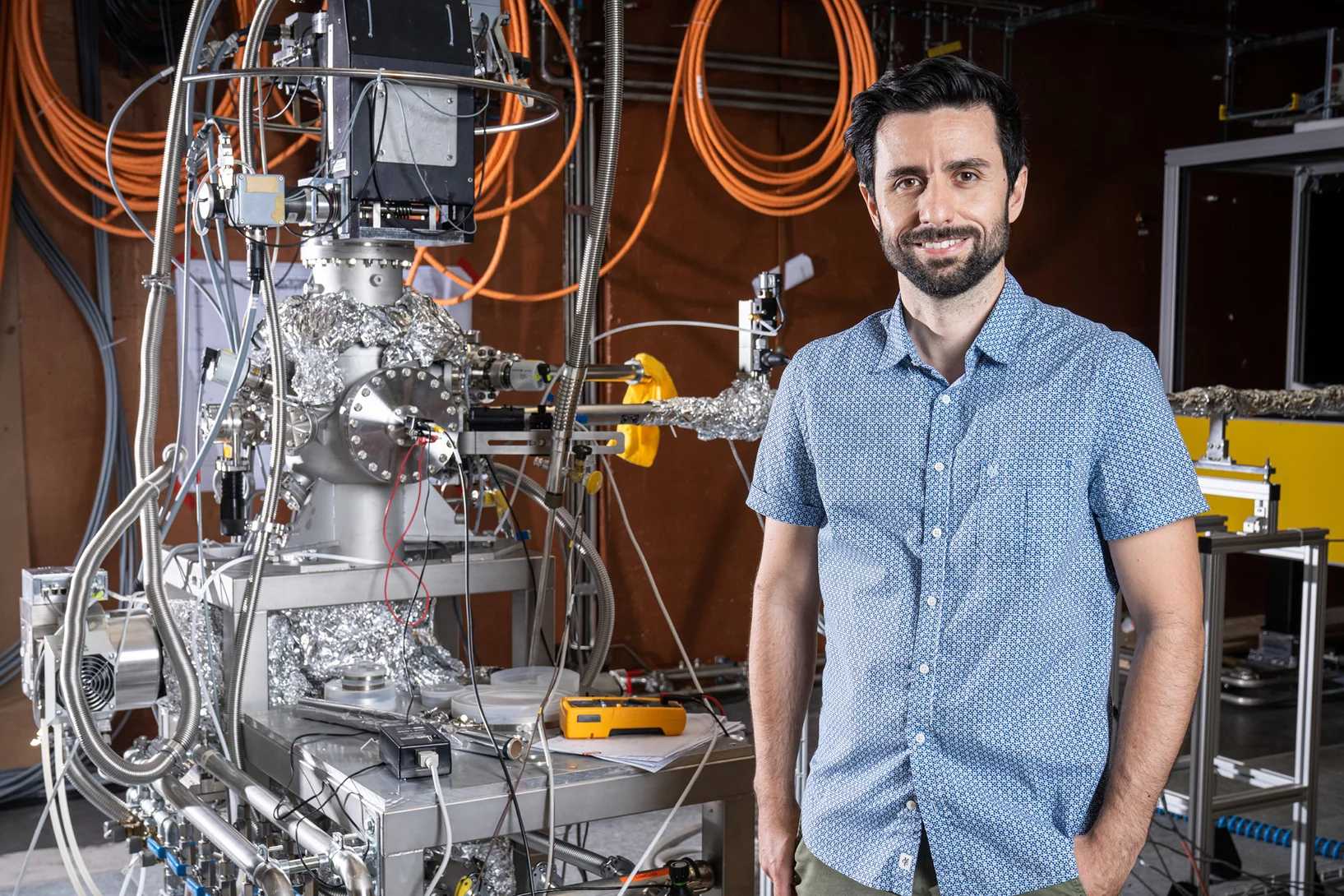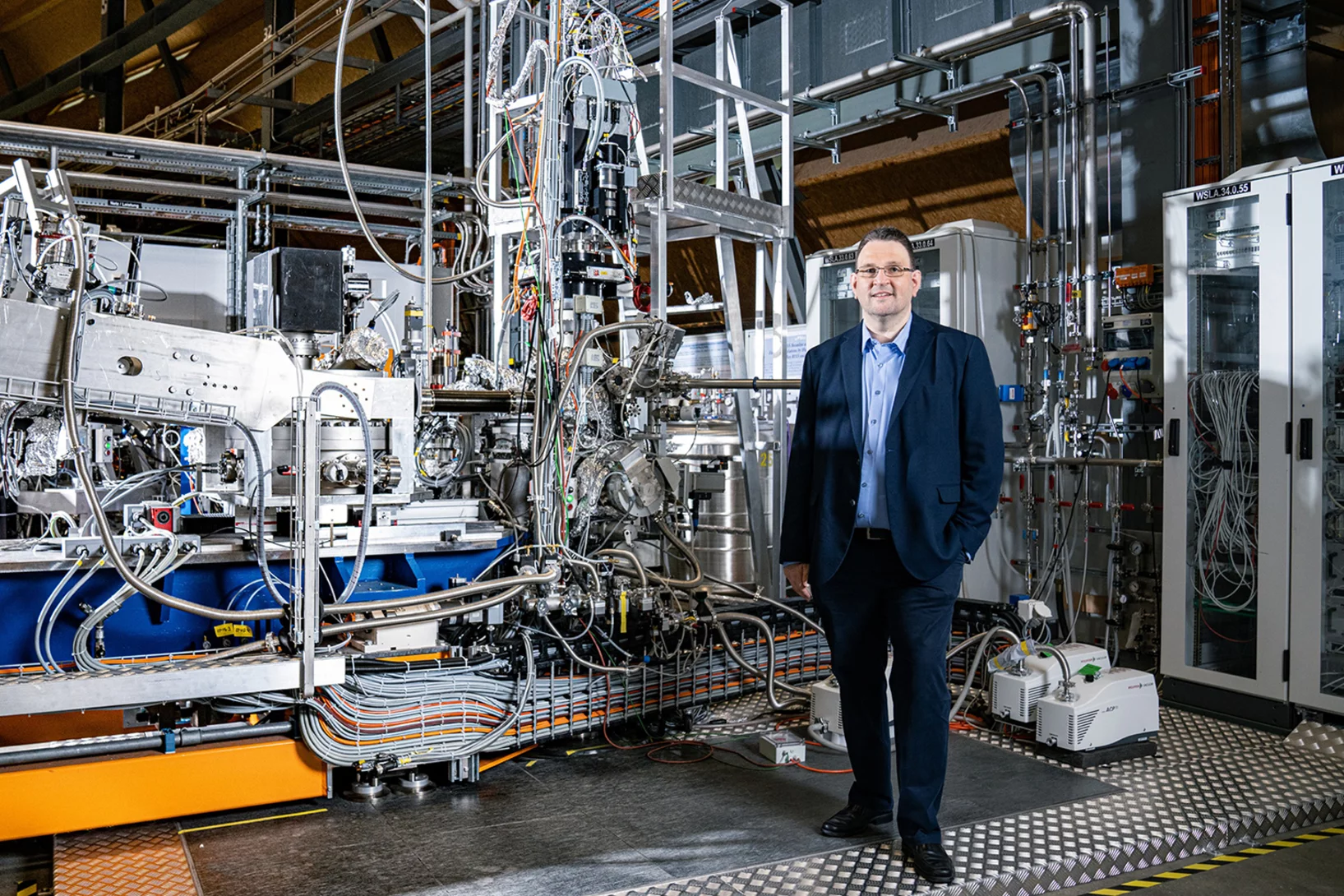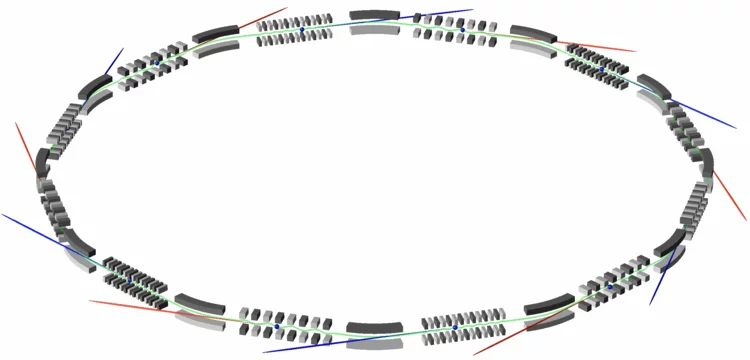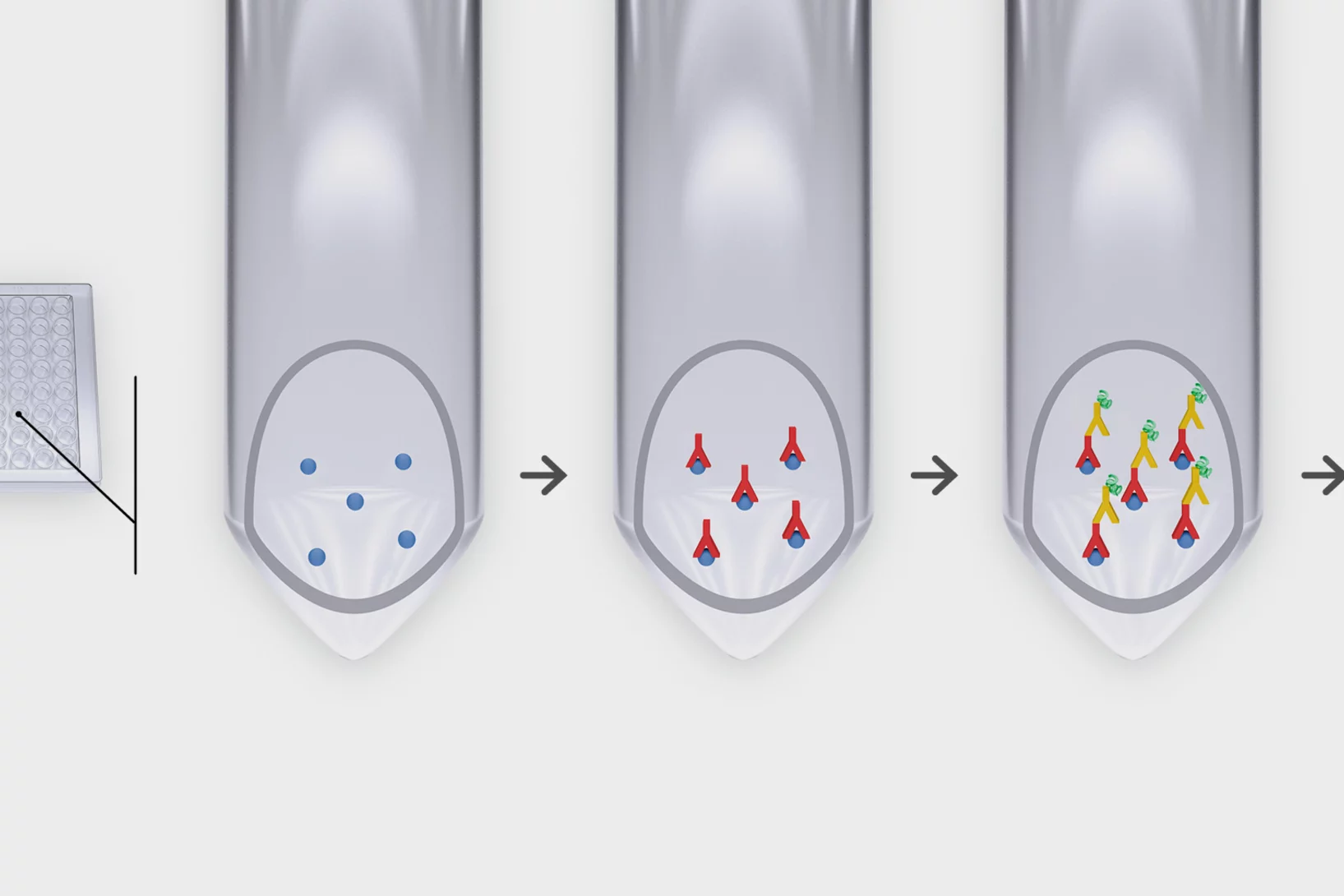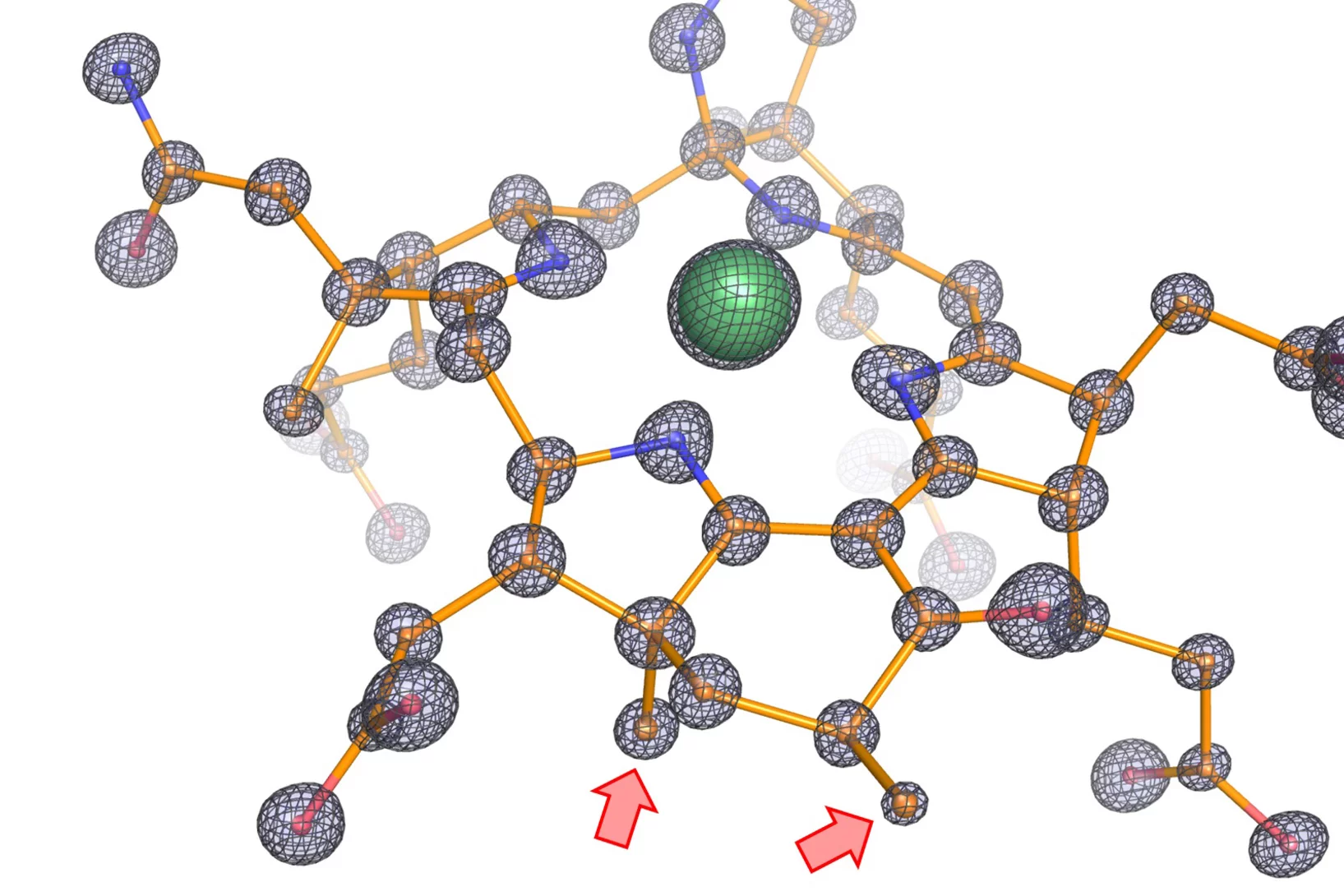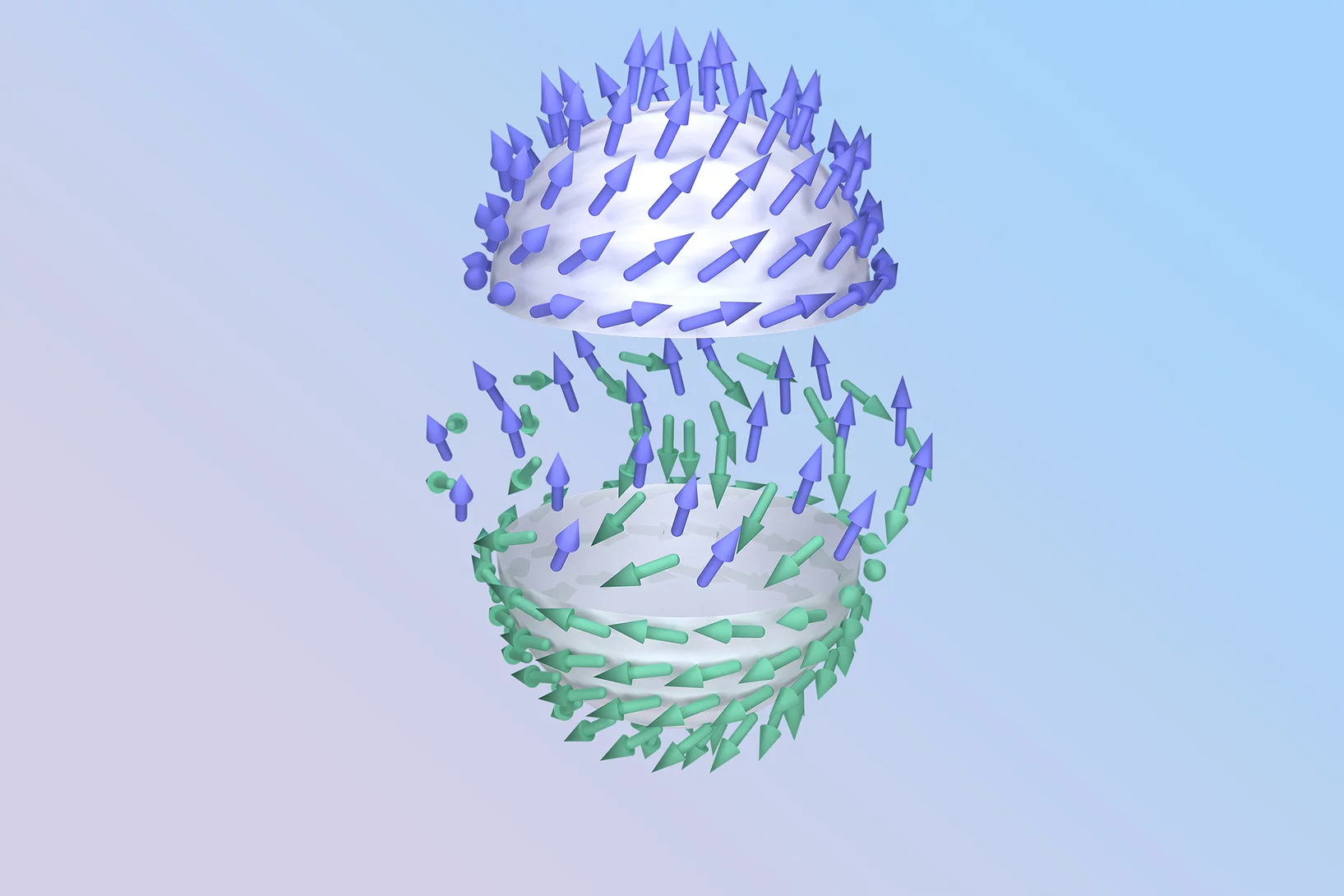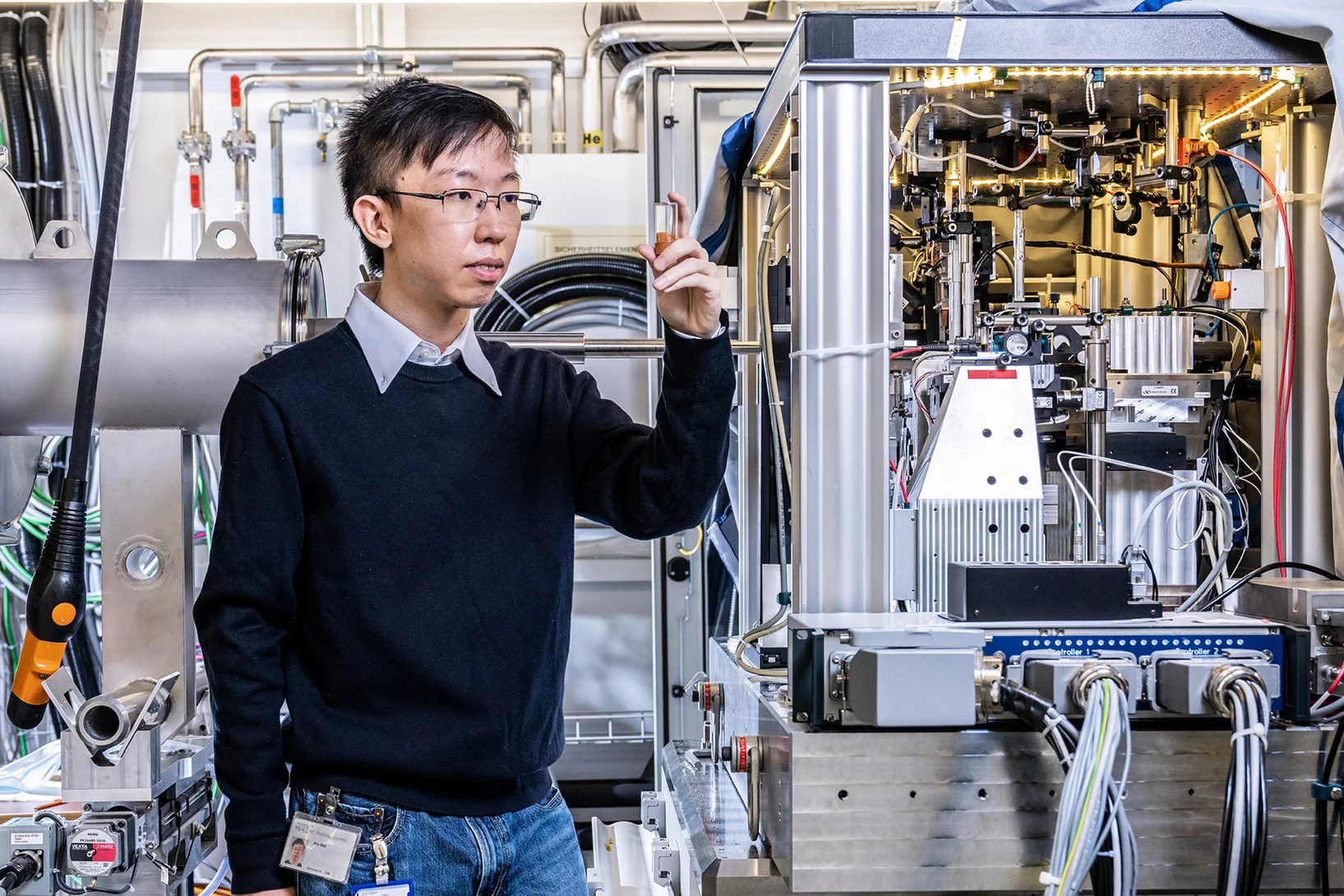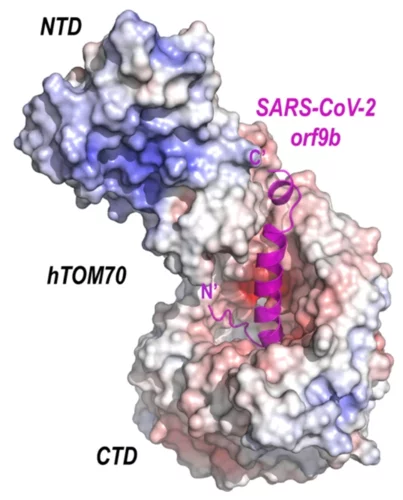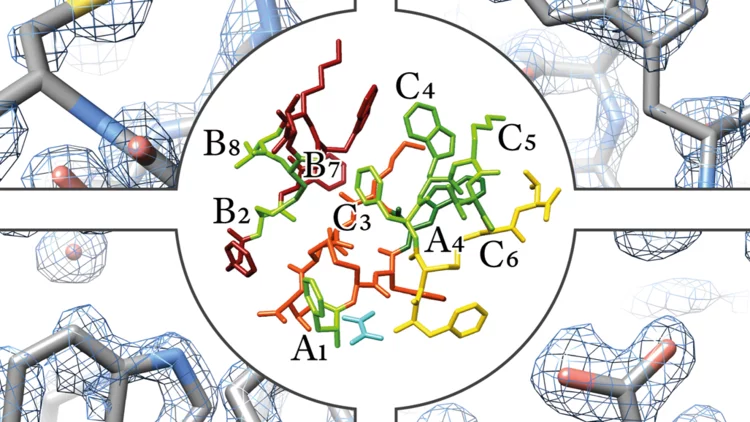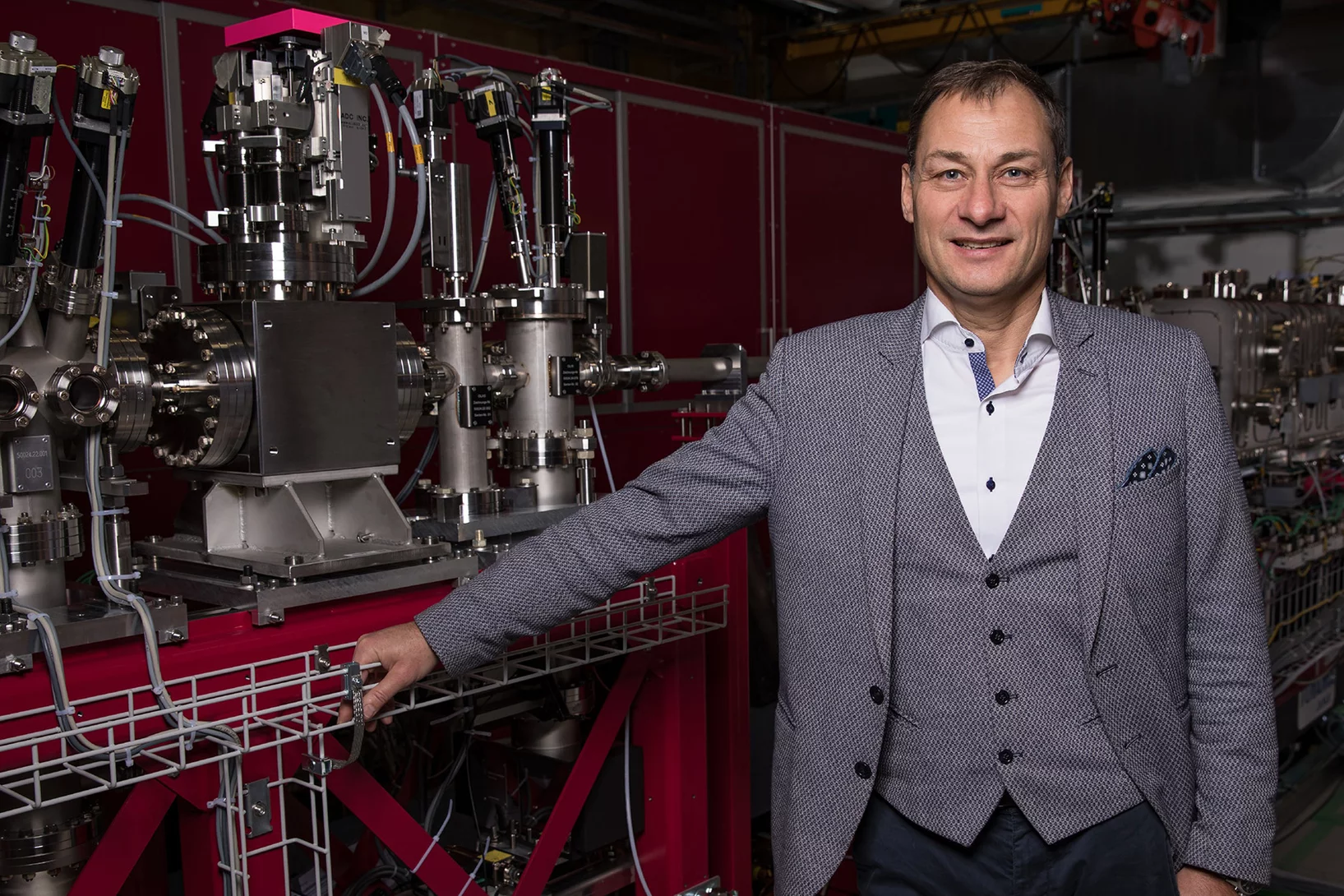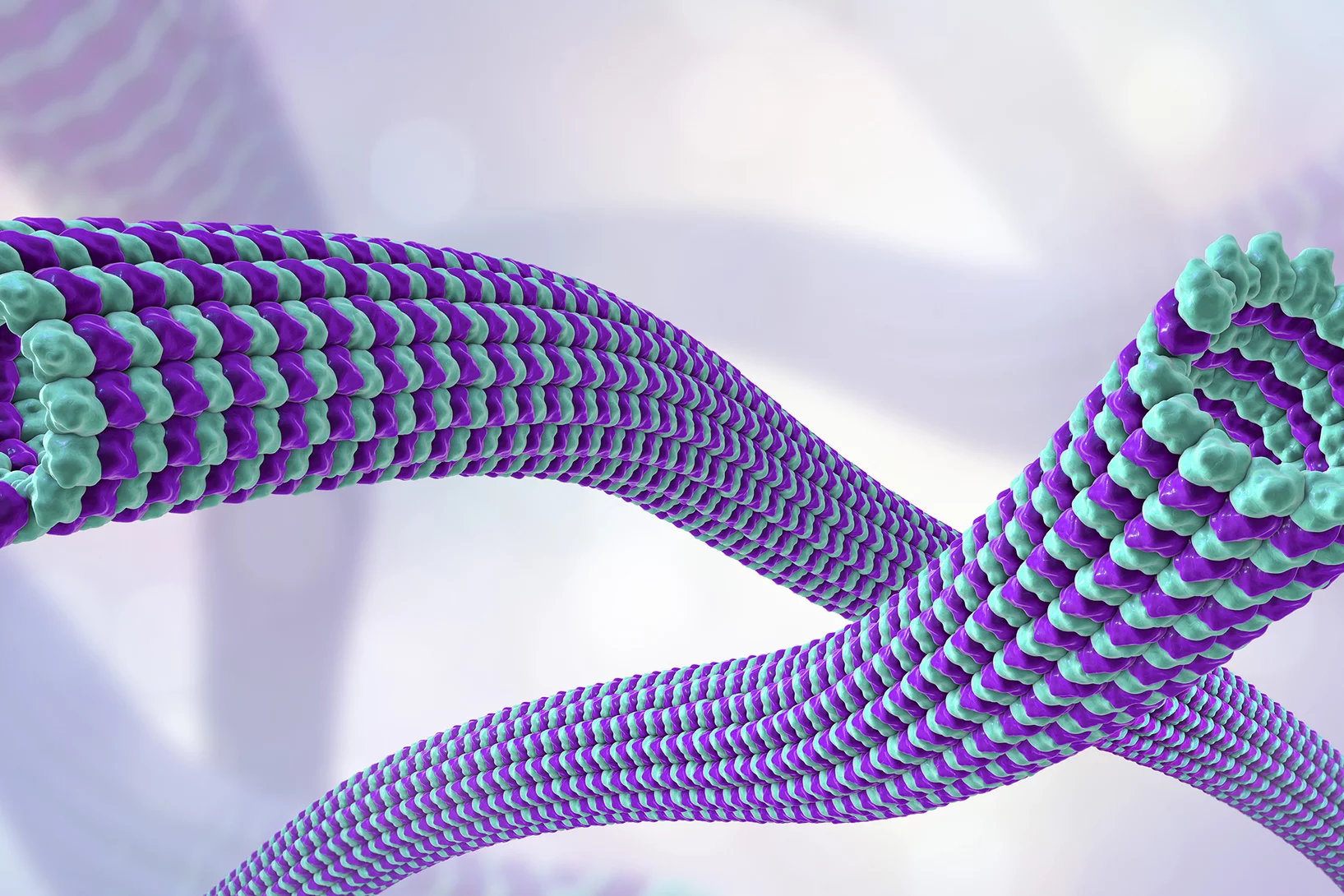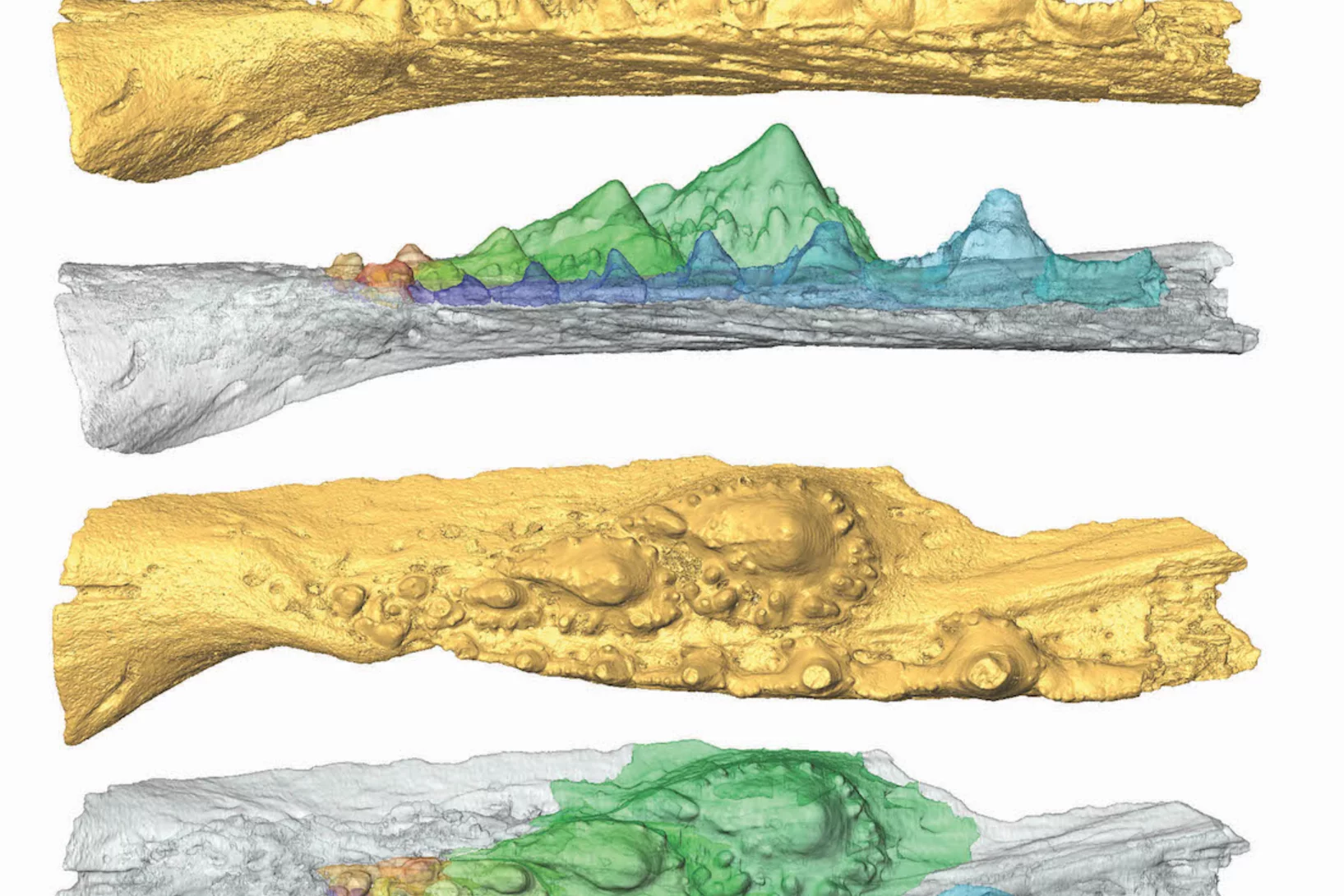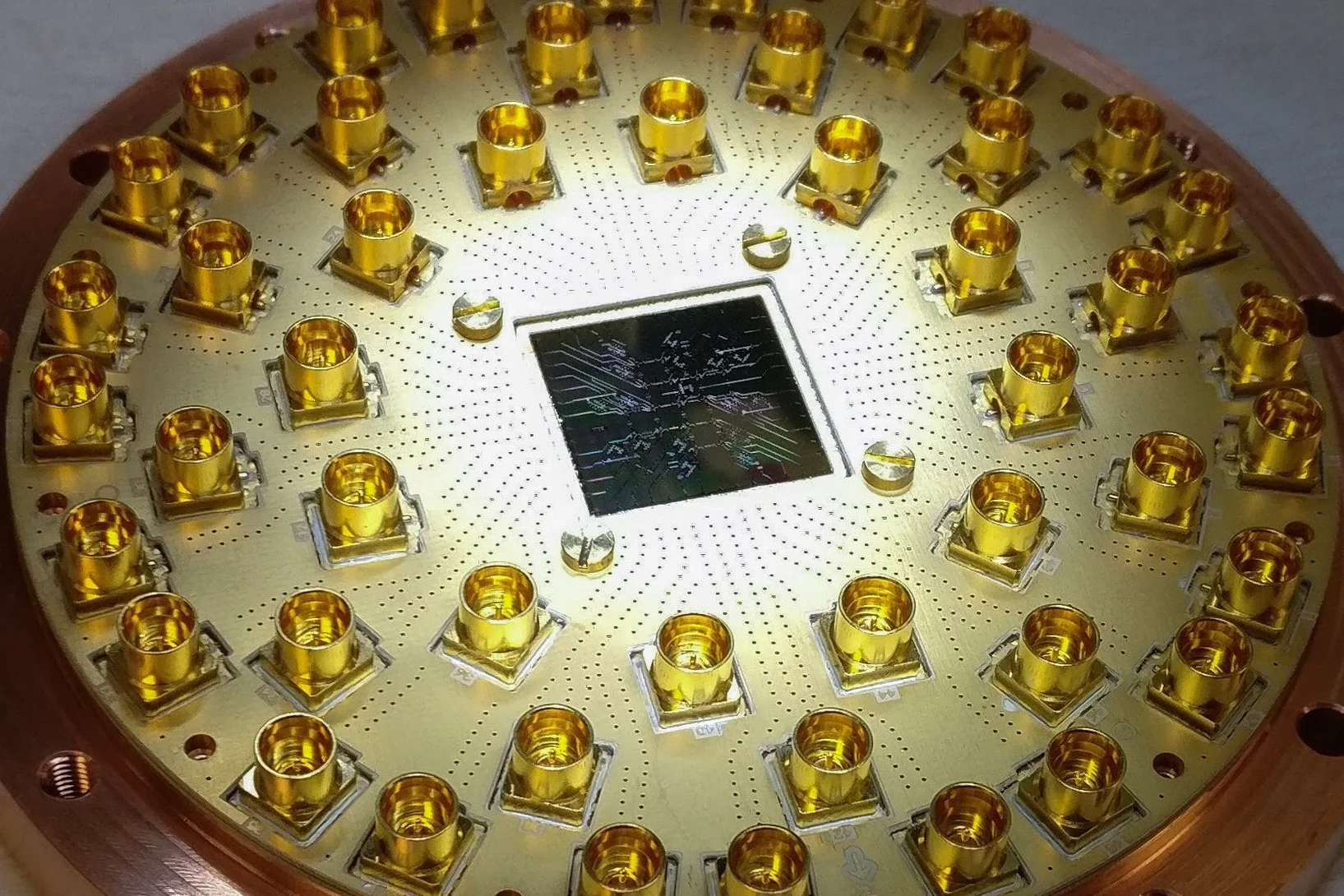Show filters
Glycation of collagen: Quantifying rates
Collagen is abundant in the connective tissue of human beings, e.g. in tendons, ligament and cornea. Glycation of collagen distorts its structure, renders the extracellular matrix stiff and brittle and at the same time lowers the degradation susceptibility thereby preventing renewal. Based on models and with parameters determined from experimental data, we describe the glycation of type 1 collagen in bovine pericardium derived bio-tissues upon incubation in glucose and ribose. We hope that this contributes to a better quantitative understanding of the effects of diabetes on collagen.
Contrôle ultrarapide de matériaux quantiques
Utiliser la lumière pour modifier fondamentalement les propriétés des solides
Nouvel antiparasite
Des chercheurs du PSI identifient un principe actif potentiel contre plusieurs parasites unicellulaires, dont ceux à l’origine du paludisme et de la toxoplasmose.
Perspective en 3D: La Source de Lumière Suisse SLS
Accélérateur linéaire, anneau d'accélération, anneau de stockage: notre graphique 3D de la Source de Lumière Suisse montre l'intérieur de l'installation et comment elle sert la recherche.
Dr. Manuel Guizar-Sicairos is awarded ICO prize
Dr. Manuel Guizar-Sicairos, beamline scientist at the cSAXS beamline, is the 2019 recipient of the International Commission for Optics (ICO) Prize. The distinction was awarded in the EOSAM conference in Rome.
Microscopie à rayons X avec 1000 images tomographiques par seconde
A la Source de Lumière Suisse SLS, des chercheurs ont établi un nouveau record dans le cadre d’une méthode d’imagerie appelée tomoscopie.
L’énigme de la coquille souple
Pourquoi la coquille d'un animal marin est molle dans l'eau mais dure dans l'air.
Le pratique dans l’extraordinaire
Niels Schröter se voit décerner un prix de la Société Suisse de Physique (SSP).
Nanobodies against SARS-CoV-2
In a study published in EMBO Journal, researchers at the Max Planck Institute for Biophysical Chemistry, Göttingen, Germany, developed nanobodies that efficiently block the coronavirus SARS-CoV-2 and its variants. The high resolution structural characterization was performed at the X10SA crystallography beamline at the Swiss Light Source.
Creating novel quantum phases via the heterostructure engineering
Within this synergetic collaboration, PSI scientists have investigated the correlation between magnetic and electronic ordering in NdNiO3 by tuning its properties through proximity to a ferromagnetic manganite layer. The main outcome is that the stray magnetic field from the manganite layer causes a novel ferromagnetic-metallic (FM-M) phase in NNO. This work demonstrates the utilization of heterostructure engineering for creating novel quantum phases.
Première lumière à Furka: les expériences peuvent démarrer
La voie vers des expériences uniques au monde est libre.
Le secret des Stradivarius dévoilé
Comme l’a découvert une équipe internationale de chercheurs, les anciens maîtres luthiers Stradivari et Guarneri utilisaient des adjuvants chimiques inattendus pour leurs violons.
Comprendre la physique à l’œuvre dans certains matériaux innovants
Une équipe internationale réunissant des chercheurs du PSI et leurs collègues pourrait avoir réussi à rendre utilisables certains matériaux fortement corrélés pour une application dans les domaines de la supraconductivité, du traitement des données ou encore des calculateurs quantiques.
Synchrotron movies
Prof Philip Willmott, the author of the book 'Introduction to Synchrotron Radiation: techniques and applications' (second edition, John Wiley & Sons, Chichester, 2019. ISBN: 9781119280392), makes the scripts for the simulations and animations available to the public.
Coronavirus: dissiper le flou qui entoure les chiffres
L'hôpital universitaire de Zurich utilise des protéines produites par le PSI pour une étude afin de déterminer combien de personnes ont été infectées par le coronavirus.
How ethane-consuming archaea pick up their favorite dish
Scientists decode the structure of the enzyme responsible for the ethane fixation by – beside others – using the SLS.
PSI: constants progrès dans la lutte contre le coronavirus
Analyses de structures cristallines, modèles informatiques, cultures cellulaires: dans ses recherches sur Sars-CoV-2, le PSI emprunte de nombreuses voies. Aperçu.
Nanomonde magnétique
Au PSI, les chercheurs sont confrontés à des phénomènes exotiques tels que les aimants frustrés et les nanotourbillons, qui pourraient un jour permettre de stocker les données plus efficacement.
Comment les catalyseurs vieillissent
La structure du matériau utilisé dans les catalyseurs en industrie chimique se modifie au fil des ans. Des chercheurs du PSI ont étudié ce phénomène au moyen d’une nouvelle méthode.
Crystal structure of SARS-CoV-2 Orf9b in complex with human TOM70 suggests unusual virus-host interactions
In a study published in Nature Communications, researchers at the NHC Key Laboratory of Systems Biology of Pathogens in Beijing, China, in collaboration with the Paul Scherrer Institut characterize the interactions of SARS-CoV-2 orf9b and human TOM70 biochemically, and they determine the 2.2 Å crystal structure of the TOM70 cytosolic domain with a bound SARS-CoV-2 orf9b peptide.
Application of synchrotron-XRPD to protein powders
Breakthrough applications of high-resolution and high-counting statistics synchrotron X-Ray Powder Diffraction to protein powders leading to the determination of a 1.8 structural model of the pharmaceutical peptide "octreotide" - the highest resolution ever achieved for a peptide of this complexity using X-ray powder diffraction and crystallographic methods.
Une force magique qui fait grand effet
Des microrobots ou de meilleurs accélérateurs de particules deviennent possibles par la recherche sur le magnétisme au PSI.
Quantifying oriented myelin in mouse and human brain
Myelin 'insulates' our neurons enabling fast signal transduction in our brain. Myelin levels, integrity, and neuron orientations are important determinants of brain development and disease. Small-angle X-ray scattering tensor tomography (SAXS-TT) is a promising technique for non-destructive, stain-free imaging of brain samples, enabling quantitative studies of myelination and neuron orientations, i.e. of nano-scale properties imaged over centimeter-sized samples.
Une recherche qui ne plane pas sur un nuage rose
La lumière est essentielle à la vie. Pour les chercheurs, c’est aussi un merveilleux instrument qui leur permet de mieux comprendre la structure des matériaux.
Mode d’action du remdesivir contre le coronavirus
En coopération avec le PSI, des chercheurs de l’Université Goethe de Francfort ont probablement découvert un nouveau mécanisme d’action inconnu du remdesivir.
Le cytosquelette, cible de nouveaux médicaments
En combinant simulations informatiques et expériences de laboratoire, des chercheurs du PSI ont identifié pour des médicaments de nouveaux domaines de liaison potentiels sur la tubuline, une protéine vitale.
Deep evolutionary origins of the human smile
Detailed characterization of the tooth and jaw structure and development among shark ancestors by synchrotron based X-ray tomographic microscopy at TOMCAT led an international team of researchers from the Naturalis Biodiversity Center in Leiden and the University of Bristol to the discovery that while teeth evolved once, complex dentitions have been gained and lost many times in evolutionary history.
«L’objectif est un calculateur quantique expérimental dans le canton d’Argovie»
L’ETH Zurich et l’Institut Paul Scherrer PSI ouvrent conjointement le Quantum Computing Hub. Gabriel Aeppli et Christian Rüegg évoquent ce nouveau centre de recherche.
L’ETH Zurich et le PSI créent un «quantum computing hub»
L’ETH Zurich et l’Institut Paul Scherrer PSI ouvrent un centre commun pour le développement des ordinateurs quantiques. L’objectif est de promouvoir la réalisation d’ordinateurs quantiques aussi bien sur la base de pièges à ions que de composants supraconducteurs.
Une vision par rayons X d’une netteté unique
Un nouveau procédé du PSI permet une étude de physique quantique des matériaux au moyen de lasers à rayons X.


